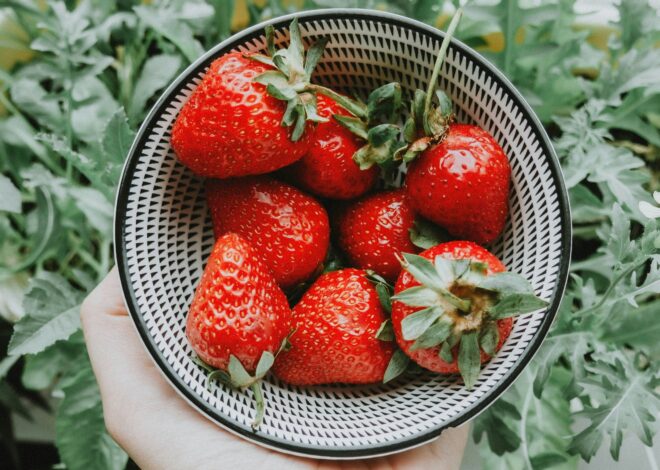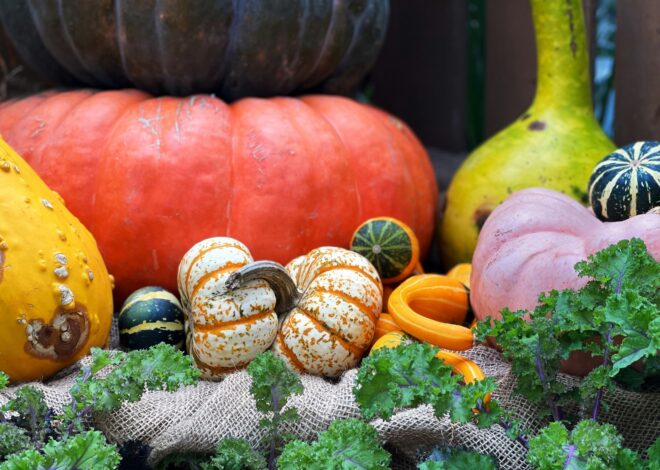
How To Grow Green Peas
Welcome to our comprehensive guide on how to grow green peas. If you’re looking to add a burst of freshness to your garden, growing green peas is an excellent choice. These vibrant little gems are not only delicious but also simple to cultivate.
Imagine stepping outside and plucking sweet, crunchy pods straight from the vine — it’s a rewarding experience that brings joy to both seasoned gardeners and beginners alike. In addition to their delightful taste, homegrown green peas offer numerous benefits.
From enhancing the flavor of your dishes to providing essential nutrients for your health, these legumes are worth every bit of effort you put into growing them. Whether you’re planting in a backyard patch or using pots on a balcony, this guide will walk you through everything you need to know about how to grow green peas successfully.
So grab your gardening gloves; let’s dig into the world of pea cultivation!
Benefits of Growing Your Own Green Peas
Growing your own green peas offers a delightful experience that goes beyond just gardening. One of the most significant benefits is freshness. Harvesting peas straight from your garden means you enjoy them at their peak flavor and nutrition.
Homegrown peas are also free from pesticides and chemicals commonly found in store-bought varieties. This allows you to eat with peace of mind, knowing exactly how they were grown. Additionally, cultivating green peas can be an excellent way to engage children in nature.
Watching seeds sprout and transform into delicious pods ignites curiosity about food and farming. There’s a certain satisfaction in nurturing plants from seed to harvest. The joy of sharing your bounty with friends or adding them to meals elevates both cooking and community connection.
Choosing the Right Variety of Green Peas
When selecting the right variety of green peas, consider your taste preferences and growing conditions. There are mainly three types: garden peas, snap peas, and snow peas. Each has its unique flavor and texture. Garden peas are sweet and best enjoyed fresh or cooked.
Snap peas offer a delightful crunch, perfect for snacking straight from the vine. Snow peas have flat pods that add an interesting twist to stir-fries. Think about your space as well. Some varieties grow taller than others and require more support.
If you’re short on room, opt for dwarf varieties which typically yield just as much in compact spaces. Check local climate compatibility. Some pea varieties thrive better in cooler temperatures while others can handle slightly warmer conditions with ease. Choose wisely to ensure a bountiful harvest!
Choosing the Right Location for Your Pea Garden
Selecting the perfect spot for your pea garden is essential for a thriving harvest. Green peas prefer full sunlight, so aim for an area that receives at least six to eight hours of direct sunlight each day. Good drainage is another key factor.
Pea plants don’t like soggy roots, so choose a location with well-draining soil to prevent waterlogging. If your yard has heavy clay or compacted soil, consider raised beds or mounds. Consider proximity to water sources as you plan your layout. Regular watering is crucial during dry spells but avoid overwatering.
Ensure there’s enough space between rows and plants to promote air circulation. This will help maintain healthy growth and reduce the risk of disease while making it easier for you to tend to your garden throughout the season.
Planting and Preparing the Soil for Green Peas
Preparing your soil is crucial for a successful green pea crop. Start by selecting a well-drained location that receives full sun. Peas thrive in slightly acidic to neutral pH levels, ideally between 6.0 and 7.5. Clear the area of any weeds or debris before planting.
Loosen the topsoil to about 12 inches deep, which allows roots to penetrate easily. Adding organic matter like compost will improve soil fertility and drainage. Once your soil is ready, it’s time to plant seeds directly into the ground when temperatures reach around 45°F (7°C).
Create rows spaced about two feet apart and plant seeds one inch deep, ensuring you maintain at least two inches between each seed. Cover them lightly with soil and water gently but thoroughly after planting. This sets up an optimal environment for germination while keeping moisture consistent as they sprout.
Caring for Your Green Pea Plants
Caring for your green pea plants is essential for a bountiful harvest. Start by ensuring they receive adequate moisture. Peas thrive in well-drained soil, so water them regularly but avoid over-saturation. Mulching can be beneficial, too. It helps retain soil moisture and suppresses weeds that compete for nutrients.
A layer of organic mulch will keep the roots cool during warmer days. Watch out for pests like aphids or spider mites. They can quickly damage young plants. Regularly check the undersides of leaves and use insecticidal soap if needed.
Fertilizing is also crucial at various growth stages. Use an organic fertilizer rich in phosphorus to encourage flowering and pod development. Support your pea plants with trellises or stakes as they grow taller. This keeps them upright and improves air circulation while making harvesting easier later on.
Harvesting and Storing Green Peas
When it’s time to harvest green peas, look for pods that are plump and firm. Gently squeeze the pod to check if it feels full. This is a good indication that the peas inside are ripe and ready. Use garden scissors or pruners to snip the pods from the vine.
Avoid pulling on them, as this can damage the plant. It’s best to harvest in the morning when temperatures are cooler, which helps preserve their freshness. Once you’ve gathered your bounty, store your peas promptly. They thrive best when kept cool and moist. For short-term storage, place them in a perforated plastic bag in the refrigerator’s crisper drawer.
If you have more than you can use right away, consider freezing them. Blanching first will help retain their vibrant color and sweet flavor during storage. Make sure they’re completely dry before sealing them in freezer bags for long-lasting enjoyment later on.
Common Pests and Diseases in Green Pea Plants
Green pea plants can fall victim to several pests and diseases. Recognizing these threats early is key to protecting your crop. Aphids are small, green or black insects that suck sap from the leaves. They multiply quickly and can weaken your plants significantly.
Use insecticidal soap or neem oil for effective control. Another common pest is the pea weevil, which lays eggs inside the pods. Look for signs of damage and take action if you spot them. Fungal diseases like powdery mildew might also affect your peas, especially in humid conditions.
Ensure good air circulation around the plants and avoid overhead watering to minimize risk. Root rot can occur due to overly wet soil or poor drainage. To combat this, ensure your planting area has well-draining soil and avoid overwatering. Regular monitoring of your plants will help catch these issues before they escalate into larger problems.
Tips for a Successful Green Pea Harvest
Timing is crucial for a successful green pea harvest. Aim to pick your peas when they’re plump but still tender. If left too long, they may become starchy and lose their sweet flavor. Use the right tools—sharp scissors or garden shears work best.
This reduces damage to the plant, allowing it to continue producing more pods throughout the season. Harvest in the morning when temperatures are cooler. The sweetness of your peas will be at its peak then, giving you tastier results in your dishes. Regularly check for ripe pods; don’t wait until all are ready at once.
Frequent harvesting encourages continued growth and helps prevent overripe peas from spoiling on the vine. Store freshly picked peas in a breathable container in a cool place if not using immediately. Proper storage keeps them fresh longer and preserves that vibrant flavor you worked hard to achieve!
Creative Ways to Use Green Peas in Cooking
Green peas are incredibly versatile and can elevate many dishes. One popular method is to mash them with a touch of garlic, olive oil, and lemon juice for a vibrant spread on toast or sandwiches. You can also toss fresh peas into salads for an unexpected crunch. Their sweetness complements vinaigrettes beautifully.
For something heartier, consider incorporating them into risottos or pasta dishes. They add color and texture that brightens up the meal. If you’re feeling adventurous, blend cooked green peas into smoothies for added nutrition without altering the flavor too much.
Don’t overlook their use in soups; pureed pea soup is both comforting and refreshing during colder months.
Final Thoughts: Is Growing Green Peas Worth it?
Growing green peas can be a rewarding experience for any gardener. The process is straightforward, and the results are delicious. With just a bit of effort, you can cultivate these vibrant little gems in your own backyard. Think about the satisfaction that comes from picking fresh peas right off the vine.
There’s nothing quite like it. They’re not only tasty but also packed with nutrients that benefit your health. Moreover, growing your own peas contributes to sustainability. You reduce carbon footprint while enjoying fresh produce without harmful pesticides or chemicals.
For those who enjoy cooking, homegrown peas open up a world of culinary possibilities—from simple side dishes to gourmet meals. If you’re considering whether it’s worth diving into this gardening adventure, weigh the benefits against any challenges you might face.
Many find it an enjoyable hobby that connects them with nature and offers tangible rewards—both on their plate and in their garden beds. So why not give it a try? Embrace the journey of growing green peas; you may discover more than just food—you could uncover a new passion along the way.



